Spring 2025 Design Day
Our Spring 2025 Engineering Design Day event will be held on Wednesday, May 7th, 2024, from 1:00pm-4:00pm in the Viejas Arena.
Design Day is the largest College of Engineering event and it showcases the exciting and innovative design projects that our undergraduate Engineering students conceive, design and build during the academic year. Each Senior Design classes in Aerospace Engineering, Civil, Construction & Environmental Engineering, Electrical & Computer Engineering, and Mechanical Engineering will be participating. 16 projects will be showcased at the 2025 Engineering Design Day event. Below are the Mechanical Engineering Senior Design projects that will be showcased at the event (More details of individual projects will be available as the event draws closer).
Design Day Projects
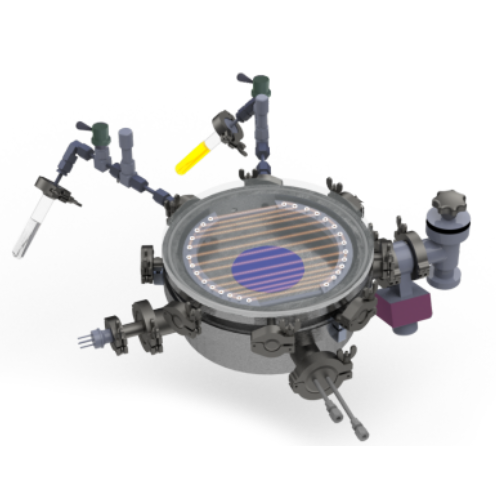
Assembly of Initiative Chemical Vapor Deposition (iCVD)Reactor for Manufacturing Functional Polymers
This iCVD setup is specifically designed for manufacturing functional polymers for biomedical applications. Students will be involved in assembling and redesigning the custom-built vacuum reactor, including connecting and assembling various components such as delivery lines, heated tapes, pressure transducers, needle valves, ball valves, gate valves, temperature controllers, and mass flow controllers.
Additionally, students will work on the electrical control box, connecting temperature controllers to solid-state relays and various transducers to regulate the process during vacuum deposition. By the end of the project, students will connect the vacuum chamber to a dry vacuum pump, assess the system’s ability to reach the base pressure, and explore modifications to ensure a robust vacuum environment.
- Team Members: Nahum Sifuentes, Gerardo Franco, Jonathan Jazo, Junichi Suda, Jonathan Jordan
- Team MINOTORR Video
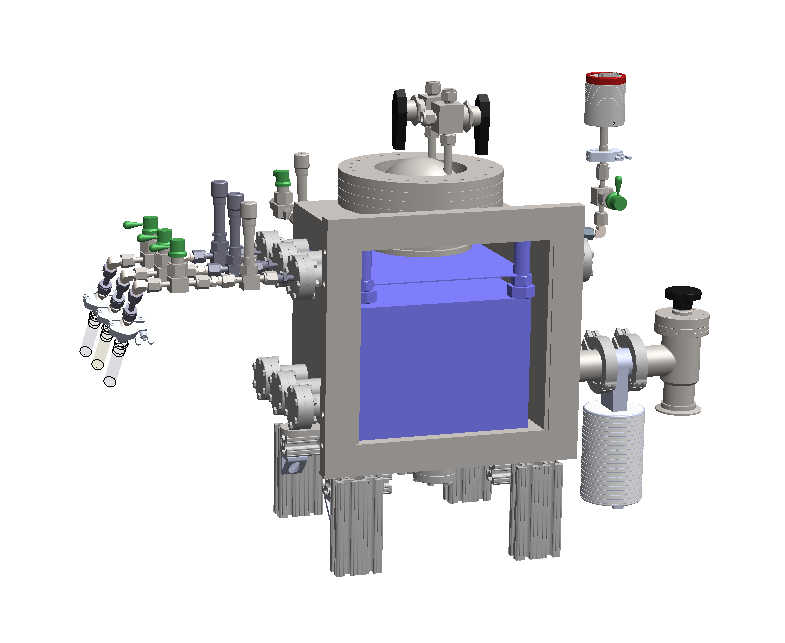
This oCVD setup is specifically designed for manufacturing conducting and semiconducting polymers for energy devices. Students will be involved in assembling and redesigning the custom-built vacuum reactor, including connecting and assembling various components such as delivery lines, heated tapes,
pressure transducers, needle valves, ball valves, gate valves, temperature controllers, and mass flow controllers. Additionally, students will work on the electrical control box, connecting temperature controllers to solid-state relays and various transducers to regulate the process during vacuum deposition. By the end of the project, students will connect the vacuum chamber to a dry vacuum pump,
assess the system’s ability to reach the base pressure, and explore modifications to ensure a robust vacuum environment.
- Team Members: Derek Chan, Ivan Sarabia, Jacob Artolachipe, Katie Hardwicke
- Team COMET Video
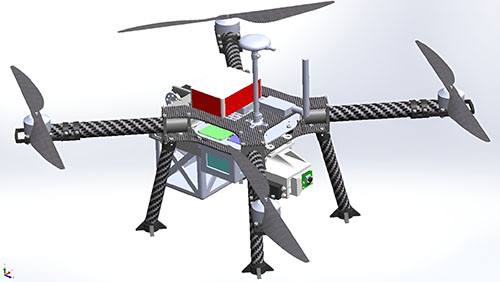
The C-UASC competition is designed to stimulate interest in Unmanned Aerial Systems (UAS) and to engage students in a challenging mission. The competition requires students to design, integrate, and demonstrate a UAS capable of autonomous flight and navigation and execution of a specific set of tasks. The vehicles may be fixed-wing, quadcopter, or other aero drones but not lighter-than-air vehicles.
- Team Members: Nathan Lozano, Luis Laurean, Eddie Meza, Justin Ochoa, Allan Valdez, Luiz Gonzalez Bautista, Daniel Solomon, Flavio Signoretti, Jalen Jones, Sophia Garcia
- Team S.T.O.R.K Video
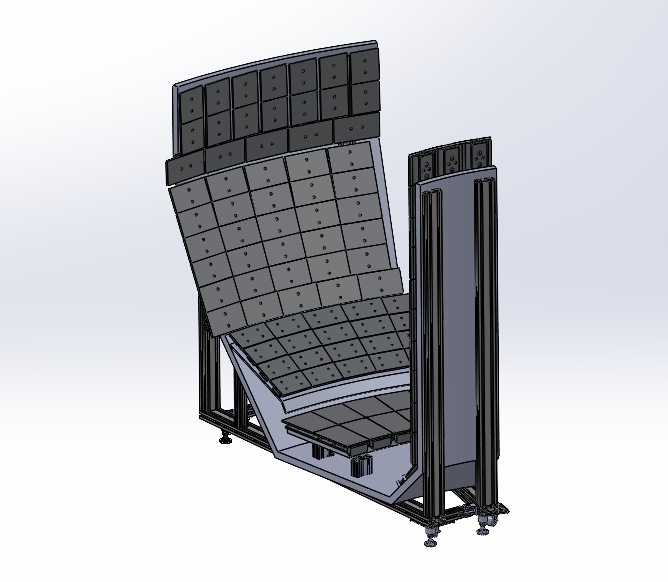
The DIII-D Tokamak nuclear fusion reactor requires an advanced armor tile attachment mechanism to support upcoming material upgrades. Our project introduces a novel tile geometry and adjustable attachment system designed to ensure heat flux resilience and precise tile alignment. Using simulations and calculations, we validate tile performance under extreme temperatures. Our prototype focuses on practical installation, enabling future material integration while addressing non-uniform wall structures for improved durability and ease of maintenance.
- Team Members: Alexis Resley, Melissa Thomas, Oscar Osuna, Samuel Villegas Felix, Sean Quirk
- Team AMOR Video
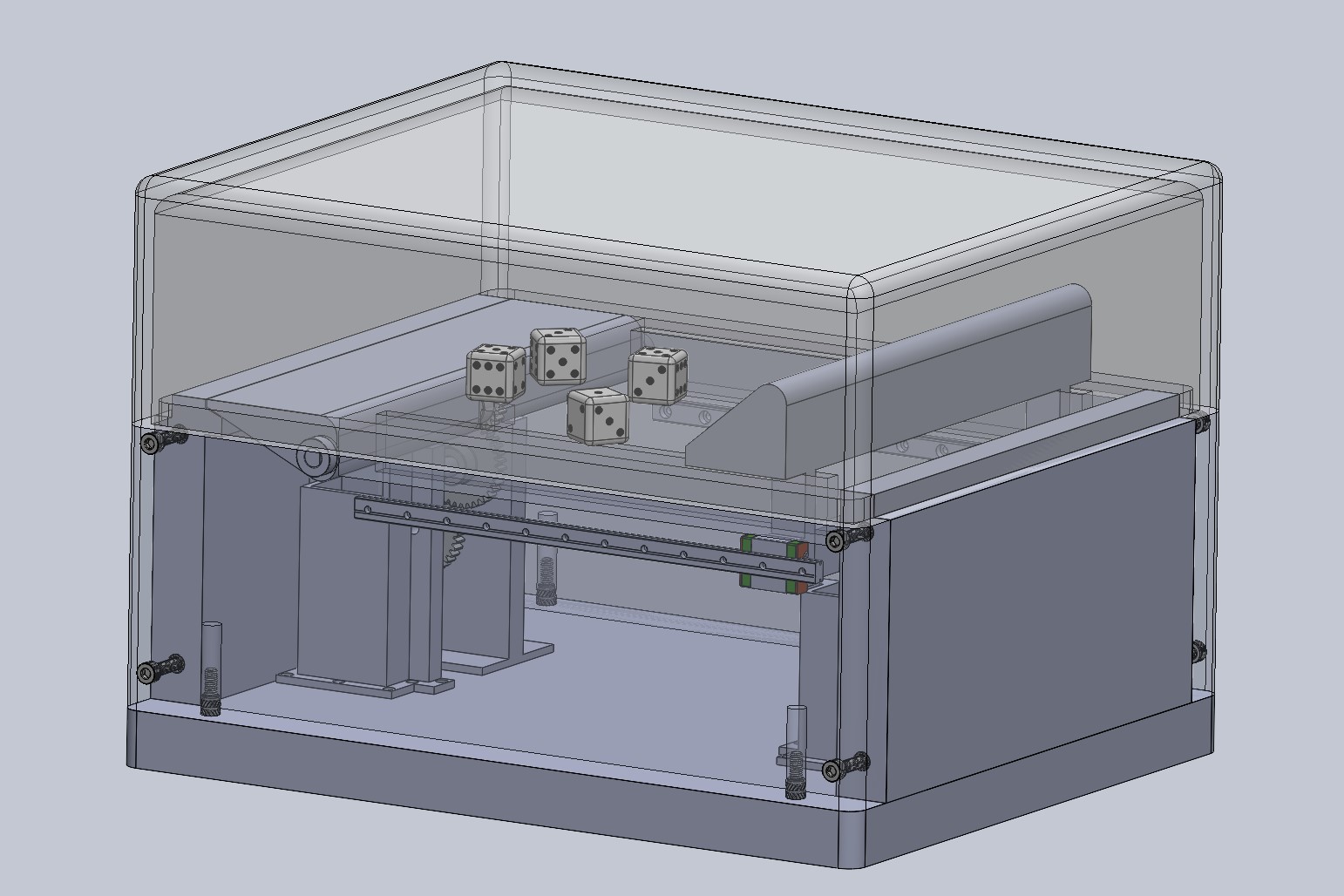
Quality of life Plus (QL+), helps develop personalized adaptive equipment for veterans that have limiting disabilities of all kinds. QL+ works with industry partners that serve our communities as well. Two of those partners are the River Deep Alliance and Craig Hospital of Denver. Craig Hospital is a top tier spinal cord and traumatic brain injury hospital with both in and outpatient services. The River Deep Alliance, founded by Mr. Bob Adwar, is a resource for veteran services providing outings, therapies, and other services for the veteran community. Together, our organizations set out to help as many people as we can through innovative adaptive equipment. Disability: This project is to help those that are paraplegic or quadrapeligic acquire more independence.
- Team Members: Cayla Ballard, Severen Brown, Isaac Rodriguez, Maxx Pastore, Jennifer Aguirre
- Team Dice Heroes Video
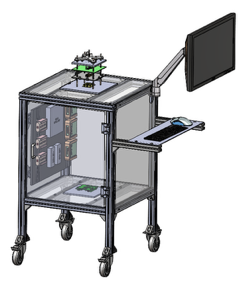
The DTS will accommodate the functional testing of many PCBA’s, and sub-assemblies used in the Dispensing product line. The system will include a PCBA designed to verify proper operation of the DTS.
- Team Members: Amari Barrabas, Brian Dautel, Dee Patel , Mutale Kulilishika
Nielea Valerie Maglaque - Team Dispensable ME Video
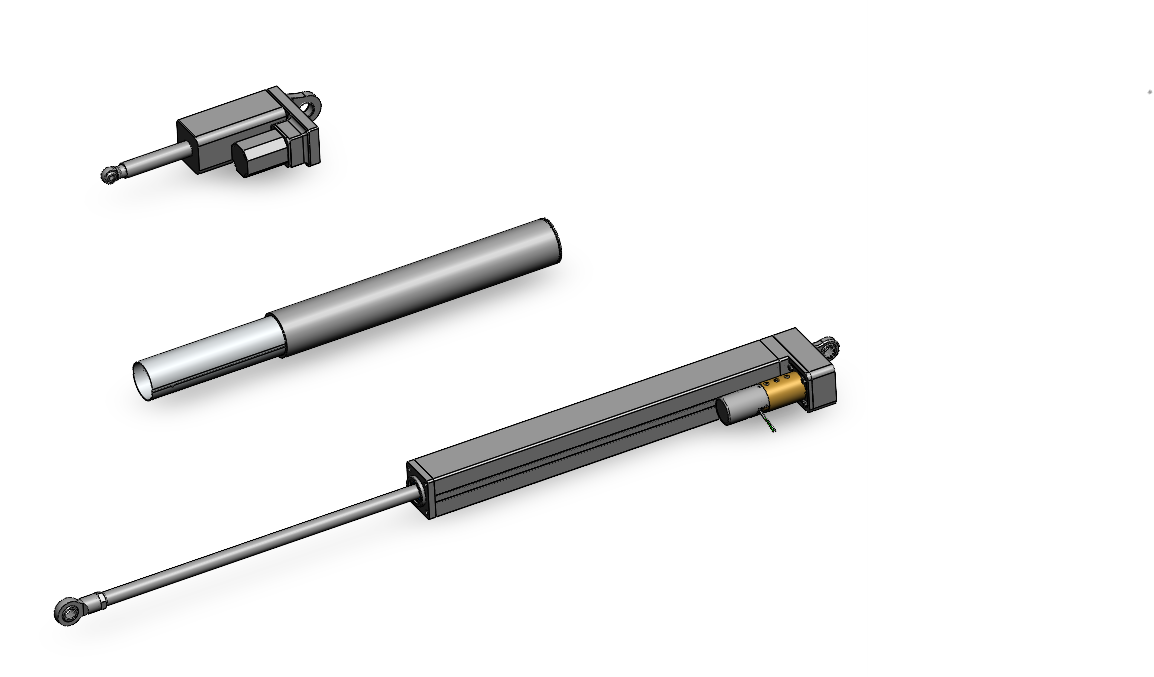
Many unmanned aircraft utilize electric power for systems that, on manned aircraft, have traditionally been hydraulically powered. This change can reduce overall aircraft weight and facilitate computer control of the system(s). For this project, the team will be tasked with designing, prototyping, and testing an electric actuation system for an existing hydraulically actuated landing gear configuration. Design and construction of test equipment will also be required.
- Team Members: Joshua Hammond, Matthew Steel, Rich Tran, Garrett Leach, and Jacob Black
- Team ACTUS Video
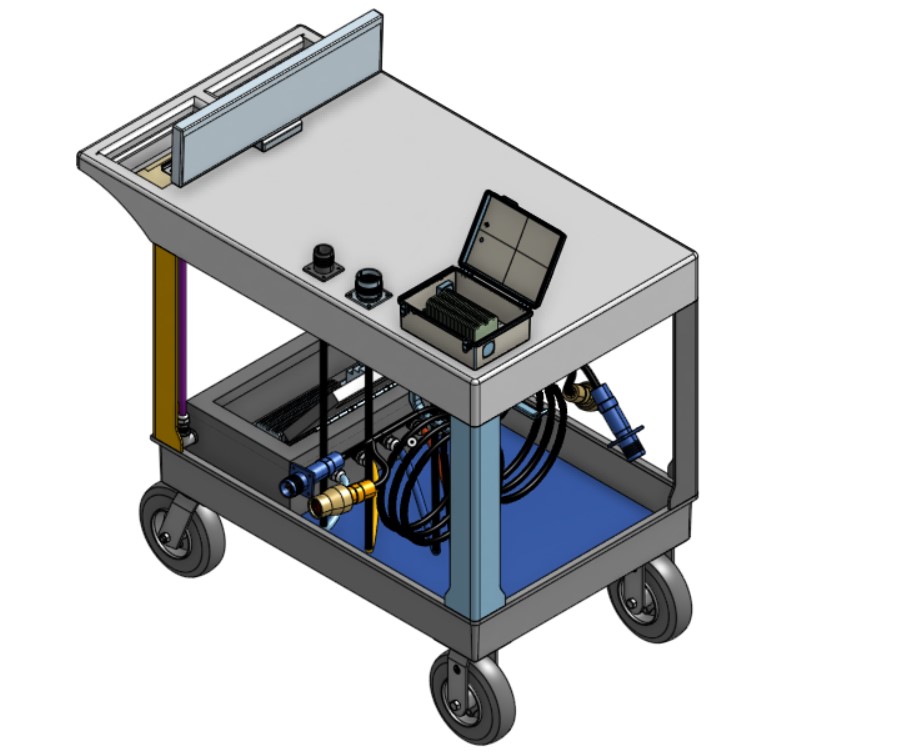
The “Electrical Quick Connect Validation Tool” project develops a portable test platform to verify Quick Connectors in Solar Turbines' Titan 350 engine packages. These connectors link engine-mounted actuators and probes in Generator and Compressor Set packages. The tool ensures connection integrity, detecting failures from incorrect terminations during manufacturing and installation. It tests continuity for cables and control systems, preventing engine damage and operational issues while improving reliability in factory assembly.
- Team Members: Ngoc Andy Trinh, Justin Hanson, Gabe Govi, Praneel Singla
Leul Bogale - Team Amped-Up Video
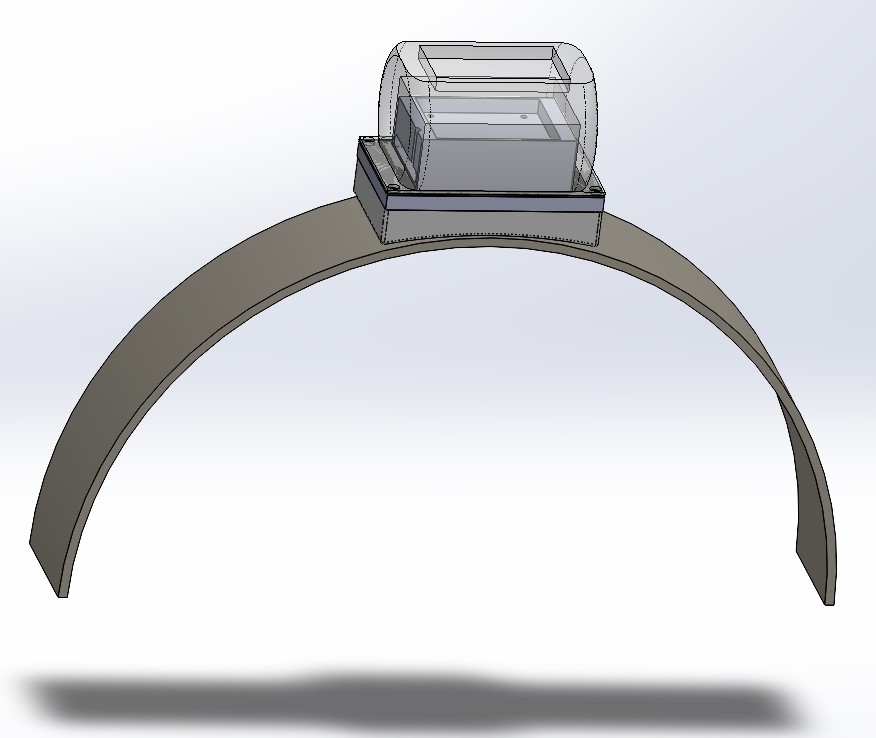
Elephants face many threats in the wild including poaching, habitat loss, and disease. A major goal in elephant conservation is to monitor their activity at all times so that there can be rapid response to potential threats, but this is a problem that cannot be solved by manpower alone. Instead, an edge-AI device on the animals could radio telemeter behavioral inferences and alert rangers quickly. To train and test this device, we can work with the African Elephants in our care. Current off-the-shelf systems are either very expensive, are not fully waterproof/impact proof, or do not utilize LoRa or onboard AI. This project involves developing an as-small-as-possible sensor stack. This will include a 9-axis IMU sampled at 25 Hz, and a board capable of housing a tinyML machine learning model. The device should periodically send device status properties and behavioral information over LoRa. The device housing needs to be elephant-proof, IP67, and able to withstand a portion of the elephant's weight. The outer face of the housing should hold a solar panel and the battery capacity should allow for indefinite use. LoRa signal strength should be considered when choosing materials as it's important the range is not inhibited greatly by the enclosure. Manufacturing of the device should be able to be reproduced with our lab’s current fabrication capabilities and rapidly accessible parts.
- Team Members: Zachary Watkins, Chase Duncan, Nolan Atkins, Jose Cardoso, Tommy Zheng, James Allison, Nathan Phan, Noah Frew
- Team Herd Video

Team ASHES was asked to develop an ember generator for wildfire research in order to simulate the behavior of embers at varying wind speeds. The ember generator burns wood pellets inside an ignition chamber to generate embers and uses a fan system to carry them out at a desired direction and speed. The system is compact and easy to transport. This device will be used to advance research of fire risks associated with Wildland-Urban Interface (WUI) vegetation and structures.
- Team Members: Emmanuel Flores, Galia Melgoza Cruz, Riya Shah, and Jeremy Parks
- Team A.S.H.E.S Video
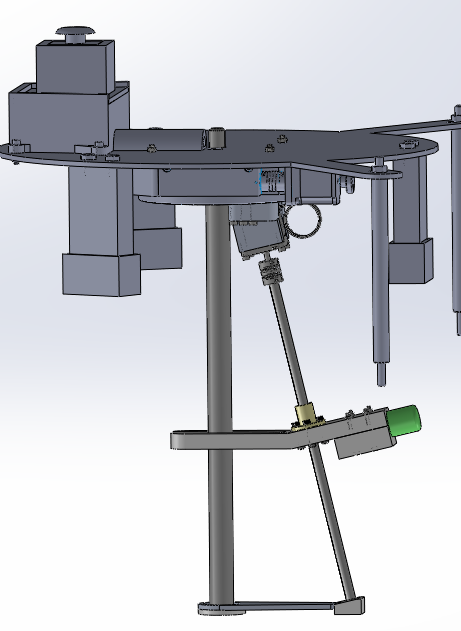
ASML focuses on developing and manufacturing Extreme Ultraviolet (EUV) lithography machines essential for producing computer chips. This process uses liquid tin ablated by a CO2 laser, including approximately 2,000 gas holes that guide tin to the proper disposal. Currently, ASML inspects these holes by hand which is inefficient and dangerous. Team Deep Purple has been tasked with designing a dual-axis robotic camera system to check which holes are blocked by tin debris. This increases the efficiency and safety of the cleaning process.
- Team Members: Brian Henry, Hayden Keyser, Charles Taylor, Andre Hozi, Matthew Steinmetz
- Team Deep Purple Video
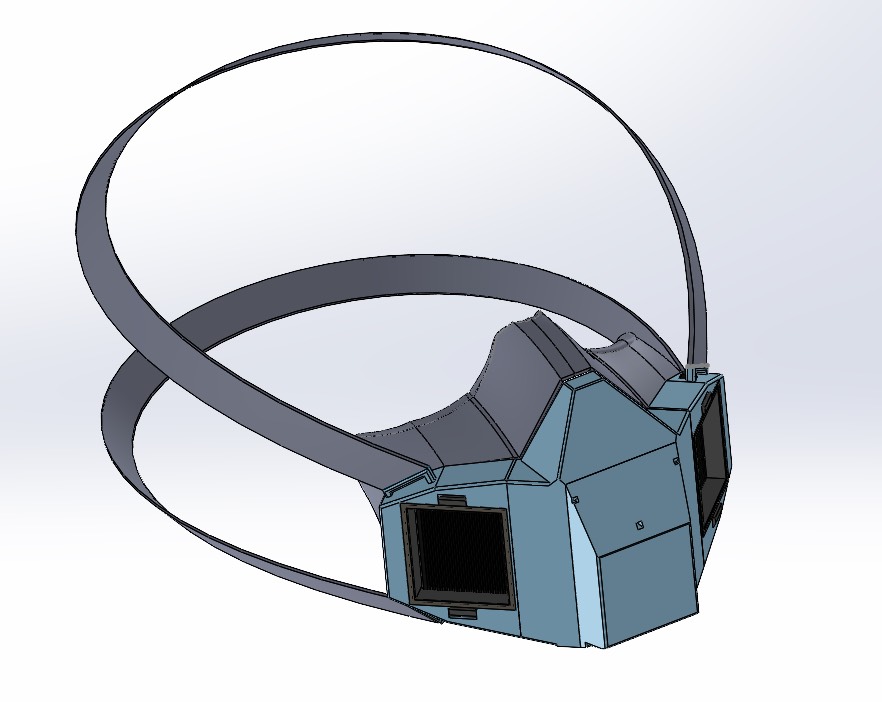
The joint Mechanical and Electrical team worked to develop an elastomeric half-mask respirator with integrated gas sensor technology for first responders. The final ergonomic design houses particulate matter, carbon dioxide, temperature, pressure, and humidity sensors connected via Bluetooth to a mobile app. This design demonstrates what is possible in the world of gas sensing and provides the groundwork for future iterations by AtmoSense.
- Team Members: Morgan Mcfarland, William Wesner, Alexander Griffin-Vigderovich, Matt Ruzzamenti, Darren Mansour, Khiet Nguyen, Elvis Thi, Eric Smith, Tye Williams, Harvie Porcadas
- Team SceneSafe Video
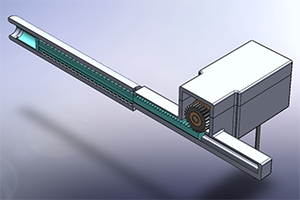
Quality of life Plus (QL+) helps develop personalized adaptive equipment for veterans that have limiting disabilities of all kinds. QL+ works with industry partners that serve our communities as well. Two of those partners are the River Deep Alliance and Craig Hospital of Denver. Craig Hospital is a top tier spinal cord and traumatic brain injury hospital with both in and outpatient services. The River Deep Alliance,
founded by Mr. Bob Adwar, is a resource for veteran services providing outings, therapies, and other services for the veteran community. Together, our organizations set out to help as many people as we can through innovative adaptive equipment.
- Team Members: Sonia Maldonado,Cristi Salgado,Fernando Juarez, Omar Krichati, Max Brown
- Team FISH Video
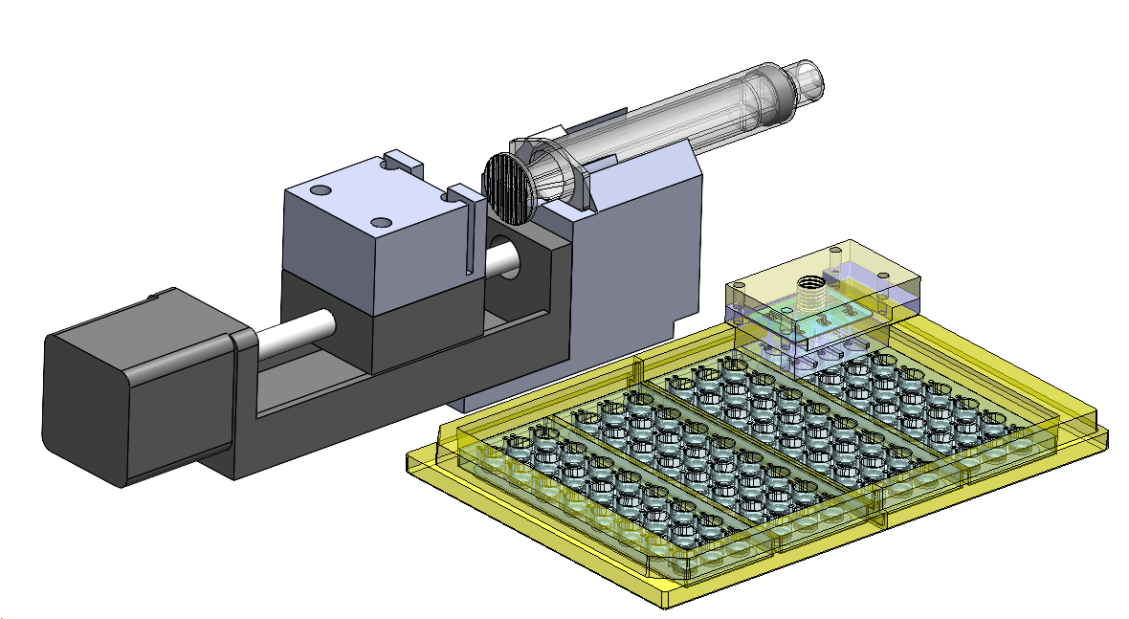
Developing treatments for diseases is slow and expensive. Our project speeds up this process by using cell growth chambers and an automated system to feed cells, remove waste, and introduce potential treatments for testing. By exposing cells to different drugs or therapies in a controlled environment, scientists can quickly see what works and what doesn’t. This system allows more experiments to run at the same time, making it easier and faster to find effective cures, ultimately leading to better and more affordable treatments for diseases.
- Team Members: Emilia Cadenasso, Katherine Simms, Mark Osorio, David Liang, Daniel Martinez-Barry
- Team C.R.O.M.E Video
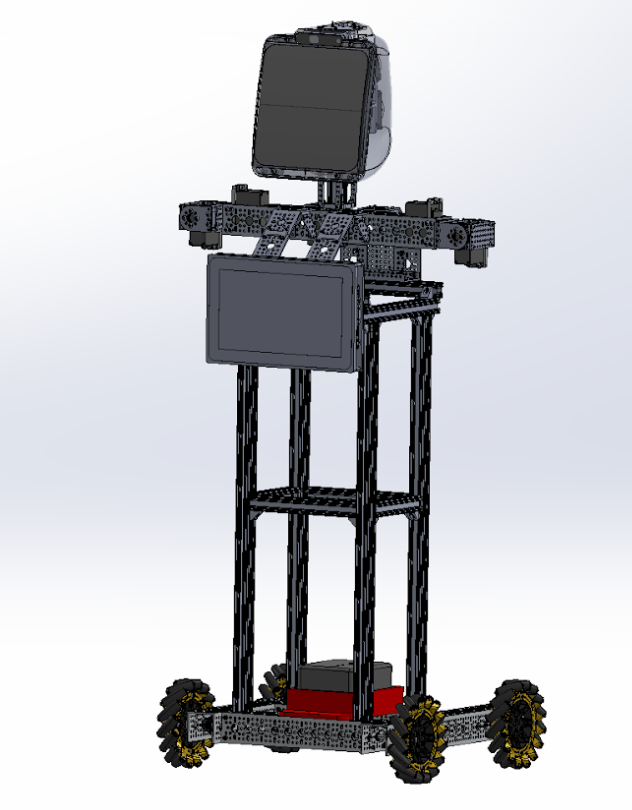
In collaboration with the James Silberrad Brown Center of Artificial Intelligence, our team was responsible for developing a modular and dynamic humanoid robot that can evolve with the technological advancements in AI. The research lab will use this robot to integrate their own AI models geared towards social and emotional intelligence.
- Team Members: Chloe Ballard, Britton Mennie, Riley Magrini, Lukas Ginsberg, Joseph Dizon
- Team Aztech Prime Video
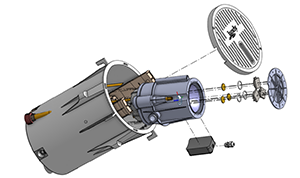
In the swimming pool industry, there are various designs of water features that use water and light to accentuate the swimming pool aesthetics. One challenge is to bring enough light to a long stream of laminar flow to create a bright enough visual effect for the user. One proposed solution is to add small bubbles to this stream of water which will refract the lighting and make the stream “glow” more brightly when viewed by the user. This project is to start with a basic water feature and design a method of creating the micro bubbles to create the desired effect. The bubble size and quantity will need to be controlled and adjustable for testing to get the optimal effect. An ideal project will develop a method of measuring the size and amount of bubbles generated at various positions along the stream to also measure “bubble life”.
- Team Members: Donovan Abrian, Jacob Barajas, Colleen McKinley, Jacob Miranda, Joshua Orcajo
- Team BubbleStream Video
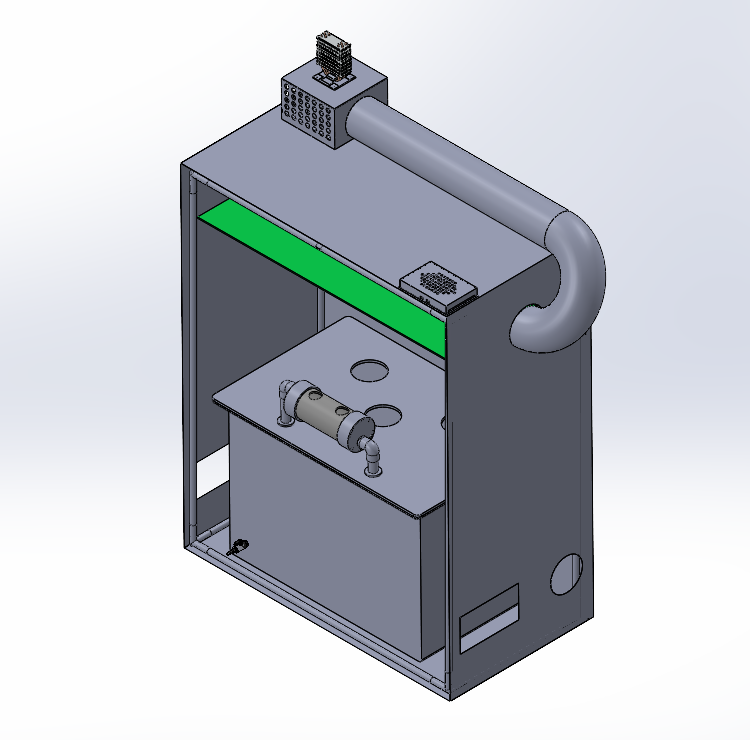
The Micro-Environment Management System (MMS) is an advanced cultivation platform that seamlessly integrates temperature, humidity, light, and nutrient control with an automated hydroponics system. Designed for precision and efficiency, its interconnected subsystems work in unison through a sensor-driven feedback loop, dynamically adapting to environmental conditions in real time. MMS represents a cutting-edge solution for controlled environments, offering a powerful tool for advancing agricultural research and driving innovation in sustainable cultivation.
- Team Members: Sabrina Abdelhamed, Noah Adam, Khosro Khademikalantari, Saja Sinnawi, Aron Zakharin
- Team Sprout Video
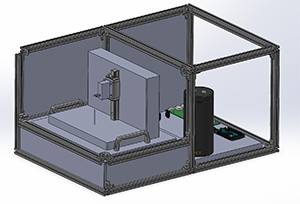
The Microwire Welder enables precise micro-actuation alignment for both fabrication and repair of wires on the micron scale. Fine-gauge thermocouples are fabricated by applying a high current pulse to electrically fuse two metal materials at a butt-junction. Additionally, hot-wire anemometers are repaired by aligning a wire to the prongs for easy and consistent soldering. This device aims to function without a lot of trial and error or user experience.
- Team Members: Jacob Morgan ME, Jose Oregel ME, Jocelin Cortez Ortega ME, Hector Molina ME, Robert Hild ME, Eric Brandenburg ECE, John Hurt ECE, David Scheffler ECE, Easter Nabaty ECE, Fausto Saavedra Gonzalez ECE
- Team Aztec Microwire Welding Video
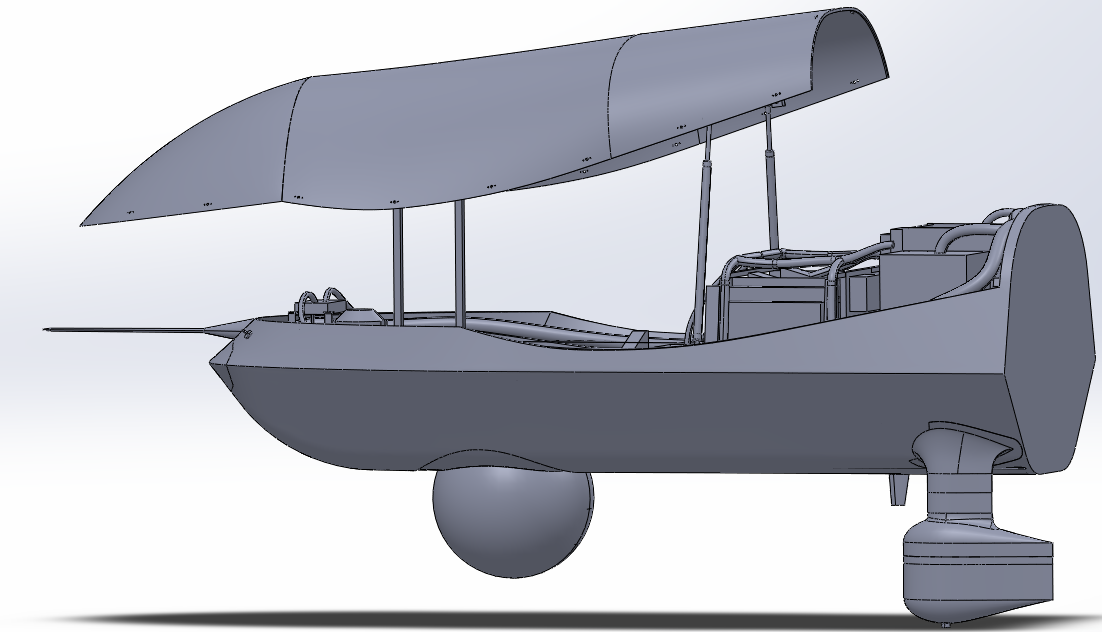
Redesign the MQ-9 radome for two separate but equally important design goals. First, the radome should be streamlined for efficient operations at cruise. Secondly, the radome should be redesigned such that it can be opened and either removed or placed into the locked position within 30 seconds. The design may use a full opening radome, panels, or some other method to facilitate common maintenance and inspection actions. Any portion of the aircraft that is opened or removed should be designed to remain safely in place during wet and windy conditions of up to 20 knots. Any design shall note keep out zones for RF transmissibility.
- Team Members: Noelle Benedict, Joey Bishop, Matthew Buck, Jason Lee, Jordan Roche
- Team Cerberus Video
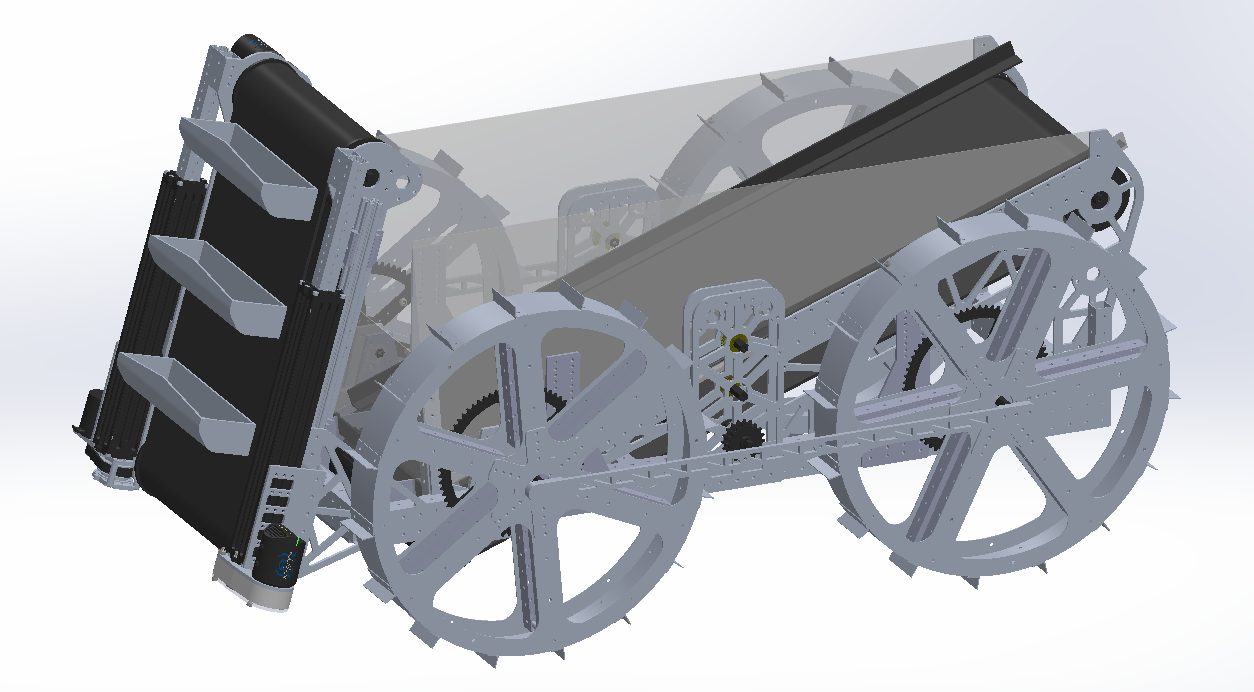
The tasks are evolving to meet the Artemis Mission requirements. In the past we
gathered data to support Lunar mining for consumables in the Lunar regolith. Now the task is to gather data on Lunar construction by designing and building a robot that will traverse the chaotic Lunar terrain and construct a regolith-based berm. The goal is to build a berm structure which would be useful to the Artemis Mission for blast and ejecta protection during lunar landings and launches, shading cryogenic
propellant tank farms, providing radiation protection around a nuclear power plant and other mission critical uses.
- Team Members: Courtney Olivier, Alex Christensen, Colin Ro, Khang Nguyen, William Traywick, Ryan Greaves, Garrett Guisinger, Steven Kourani, Rafael Lara, Felix Monasterio Mata
- Team C.R.E.E.D. Propulsion Video

The tasks are evolving to meet the Artemis Mission requirements. In the past we
gathered data to support Lunar mining for consumables in the Lunar regolith. Now the task is to gather data on Lunar construction by designing and building a robot that will traverse the chaotic Lunar terrain and construct a regolith-based berm. The goal is to build a berm structure which would be useful to the Artemis Mission for blast and ejecta protection during lunar landings and launches, shading cryogenic
propellant tank farms, providing radiation protection around a nuclear power plant and other mission critical uses.
- Team Members: Eli Uva, Kelton Shea, Simon Mattar, Adam Marquez, Jayvree-Michael Gonzales
- Team C.R.E.E.D. Excavation and Desposition Video
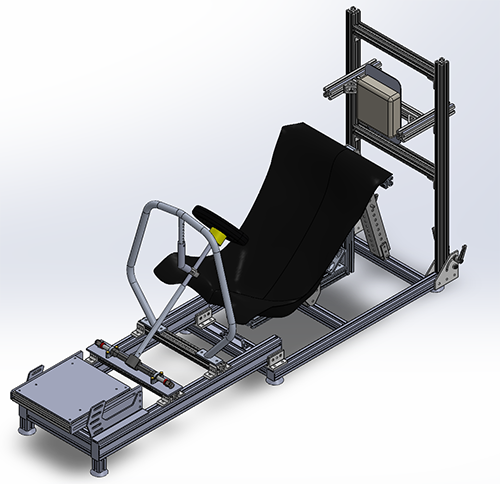
Since 2016, Aztec Electric Racing (AER) has developed electric race cars for the Formula SAE competition. This project focuses on designing a modular ergonomic jig to optimize driver positioning within AER’s Electric Vehicle. The jig will simulate various seating configurations, ensuring compliance with FSAE regulations while enhancing driver comfort and safety. Featuring adjustable components such as the seat, steering column, and pedal box, the jig enables precise ergonomic testing. Its collapsible design ensures easy storage and long-term usability.
- Team Members: Jakob Bravo, Zach Caceres-Batista, Sean Hedgecock, Alexandria Ng, Victor Velazco
- Team Aztec Ergonomics Video
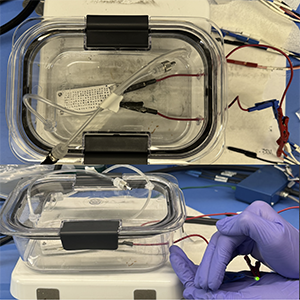
Rational Design of Bipolar Stacking Li-O2 Batteries withUltrahigh Energy Density for Aviation Applications
The project focused on five key aspects to develop a battery capable of powering a drone. Building on an existing solid-state lithium-oxygen battery from the sponsor’s research lab, modifications aimed to enhance power output. A specialized chamber was designed to analyze battery materials efficiently. Optimization efforts included refining the cathode structure, solid electrolyte, and microporous activation site while ensuring proper electrochemical ratios and preventing cross-interactions.
- Team Members: Sarah Mellado, Cruz Gonsalves, Brian Pham, James Burns, Ibrahim Bukhari
- Team Lion Power Video
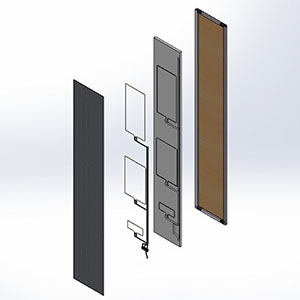
RV owners have expressed the desire for a reliable over-the-air (OTA) TV solution, but current options are prone to damage, theft, and high maintenance costs. Existing systems require vehicle modifications that increase long-term upkeep. This project aims to develop an integrated OTA antenna system for new RVs, offering durable, high-quality signal reception regardless of orientation. The project will deliver a working prototype and detailed documentation addressing signal optimization and integration challenges.
- Team Members: Cormac Gaynor, Tammi Ho, Cayton Larmer,
Marcus Stich, Grace Wise - Team Tec-Tenna Video
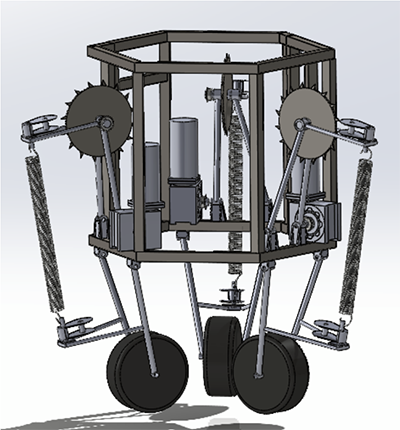
The Robotic Palm Elevator serves as a replacement for tree trimmers to move towards safer and efficient palm trimming. The elevator is to be installed around the tree and move vertically, controlled via use of a joystick controllable while applying constant tension and force on the arms. The elevator is also able to cut the fronds from the trees and hold it own weight. This is a continuation from last years project, designing and fabricating new components to complete the project.
- Team Members: Moises Mathew Edillor, Julius Fielder, Sebastian Gonzalez, Dante Monsalve, Renz Carlo Tan, Eric Hillen, Duy Huynn, Raheed Isaak, Ryan Maiden, Lukas Velasco
- Team Palm Patrol Video
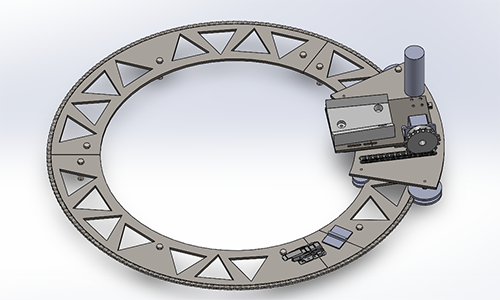
The robotic palm trimmer end effector is designed to replace manual palm trunk trimming and make trimming safer, easier, and cheaper. Using a circumferential track system and an active radial positioning stage, the tool will have a reach of 360° around the palm trunk. The trimmer will attach and interface with the Robotic Palm Elevator to achieve 6-degrees of motion around the palm tree. The Robotic Palm Tree Trimmer and Elevator will be operated manually utilizing the same controller and power source.
- Team Members: Arvin Espanta, Brayden Chau, Brandon Cooper, Lauren Miracle, Madison White, Abdul Karim Tamim, Erianna Dayrit, Gianluca Capirossi, Jackson Rayner, Leonardo Sebastian Martinez
- Team Palm Patrol Video

The Rotational Sintering Furnace project aims to design, build, and test a sintering furnace capable of horizontal rotation to mitigate gravity-induced distortions. At high temperatures, low material viscosity causes uneven deformations, leading to costly part rejection. By rotating at controlled speeds up to 1 RPM, the furnace evenly distributes gravitational forces, enabling uniform sintering of materials at up to 1700℃. This project explores a novel technique for reducing gravity-induced distortions, improving part quality and expanding sintering capabilities.
- Team Members: Alexander Price, Alexander Shedd, Jacob Espinosa, Jesus Vargas, Nicholas Kettoola
- Team Sinter Spin Video
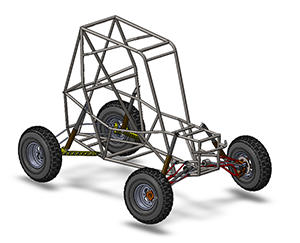
In the swimming pool industry, there are various designs of water features that use water and light to accentuate the swimming pool aesthetics. One challenge is to bring enough light to a long stream of laminar flow to create a bright enough visual effect for the user. One proposed solution is to add small bubbles to this stream of water which will refract the lighting and make the stream “glow” more brightly when viewed by the user. This project is to start with a basic water feature and design a method of creating the micro bubbles to create the desired effect. The bubble size and quantity will need to be controlled and adjustable for testing to get the optimal effect. An ideal project will develop a method of measuring the size and amount of bubbles generated at various positions along the stream to also measure “bubble life.
- Team Members: Joshua Mayo, Paulette Suro, Marco Flores, Mason Carey, Yadira Casas
- Team STORM Video

The project focuses on developing a new surface modification system for the DIII-D Tokamak nuclear fusion reactor's first wall, using a robotic solution. The system will enable the sanding of graphite tiles to remove impurities left behind after nuclear fusion runs, ensuring cleaner surfaces and improved reactor performance. The solution will integrate a sander and a 6-axis force-torque sensor with a UR-10 robot arm using a designed attachment apparatus.
- Team Members: Gio Conversano, William Albro, Kenta Smith, Cristian Medina, Jesus Lopez, Cameron Fong
- Team Automation Video
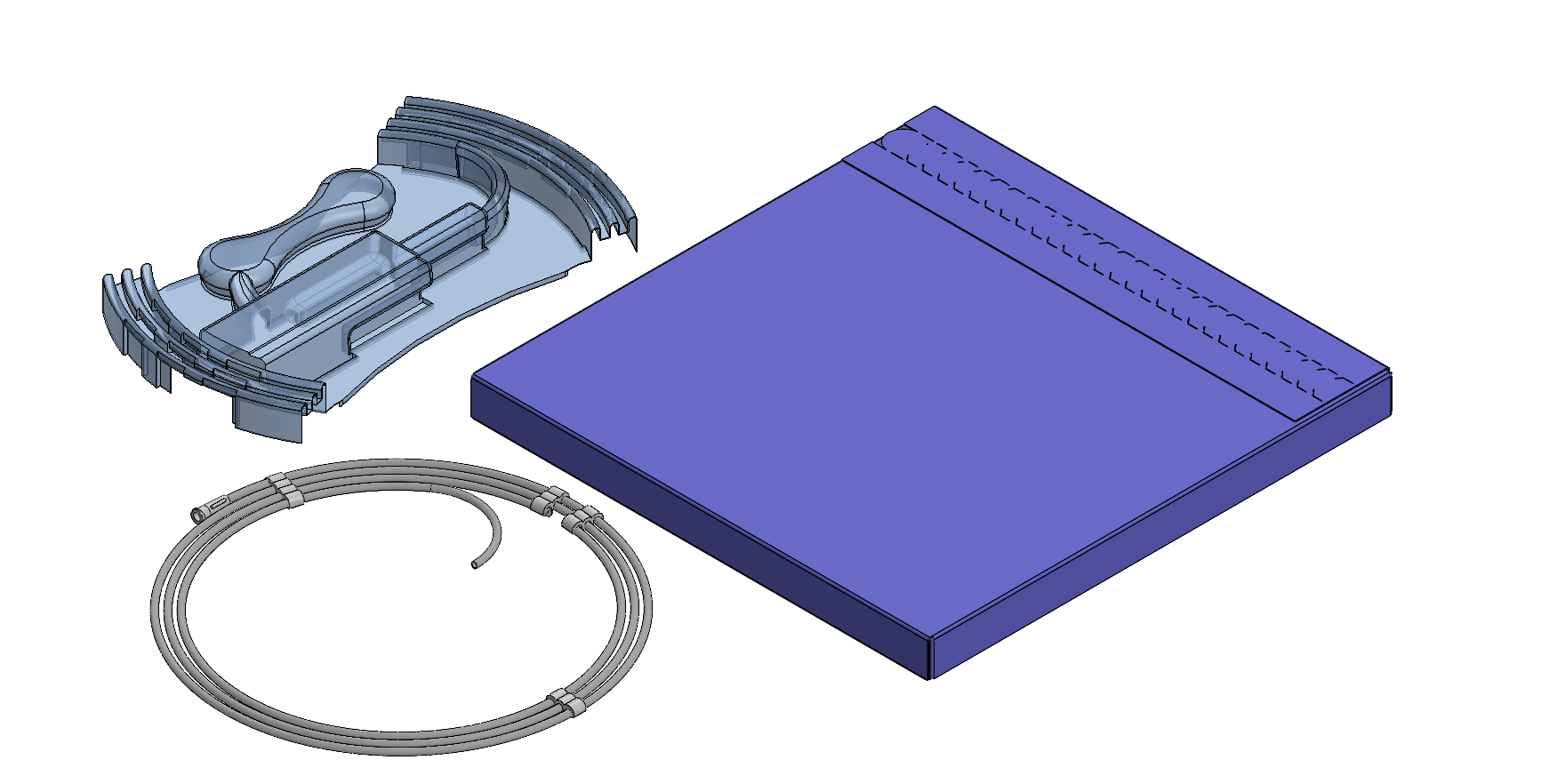
Philips Image Guided Therapy Devices excels in intravascular imaging and functional measurement tools for cardiac catheterization labs that enhance clinical decision-making. This project focuses on redesigning the packaging to reduce single-use plastic, incorporate recycled materials, and enable recycling in labs. It must maintain sterility, usability, and compliance while withstanding transport and extreme conditions. Standardization across devices is key, ensuring sustainability and efficiency while maintaining workflow in medical environments.
- Team Members: Ali Awarke, Anthony Raco, Justine Gamba, Mckendree Chesanek, Zack McDonald
- Team PulsePak Video
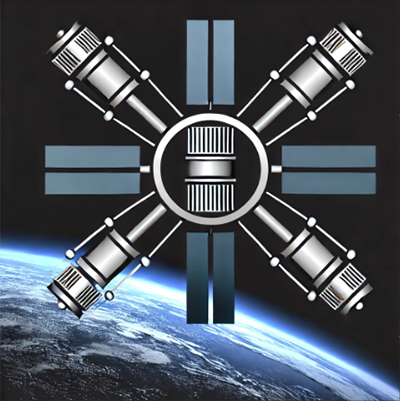
The Orbital Restoration through Innovative Operations Network (ORION) mission enhances satellite sustainability by providing in-orbit servicing in GEO. ORION consists of a depot and several servicer satellites that perform repairs, refueling, and debris tracking, reducing replacement costs and mitigating space debris. This mission aims to demonstrate the feasibility of on-orbit servicing, supporting long-term space operations and sustainability. ASTELLAR, a joint AE/ME subteam part of ORION, will test robotic arm capabilities to repair solar panels through a prototype.
- Team Members: Seth Rodriguez, Jackelyne Hernandez, Julianna Molina-O’brien, Liyou Tesfaye, Matt Villanueva, Roberto Marquez, Ryan Kataoka, Sierra Kocina, Tzu-Jen Su, Hector Hernandez, Fred Ferreiro, William Fischer, Mayhardona Narise Daniel
- Team ASTELLAR Video
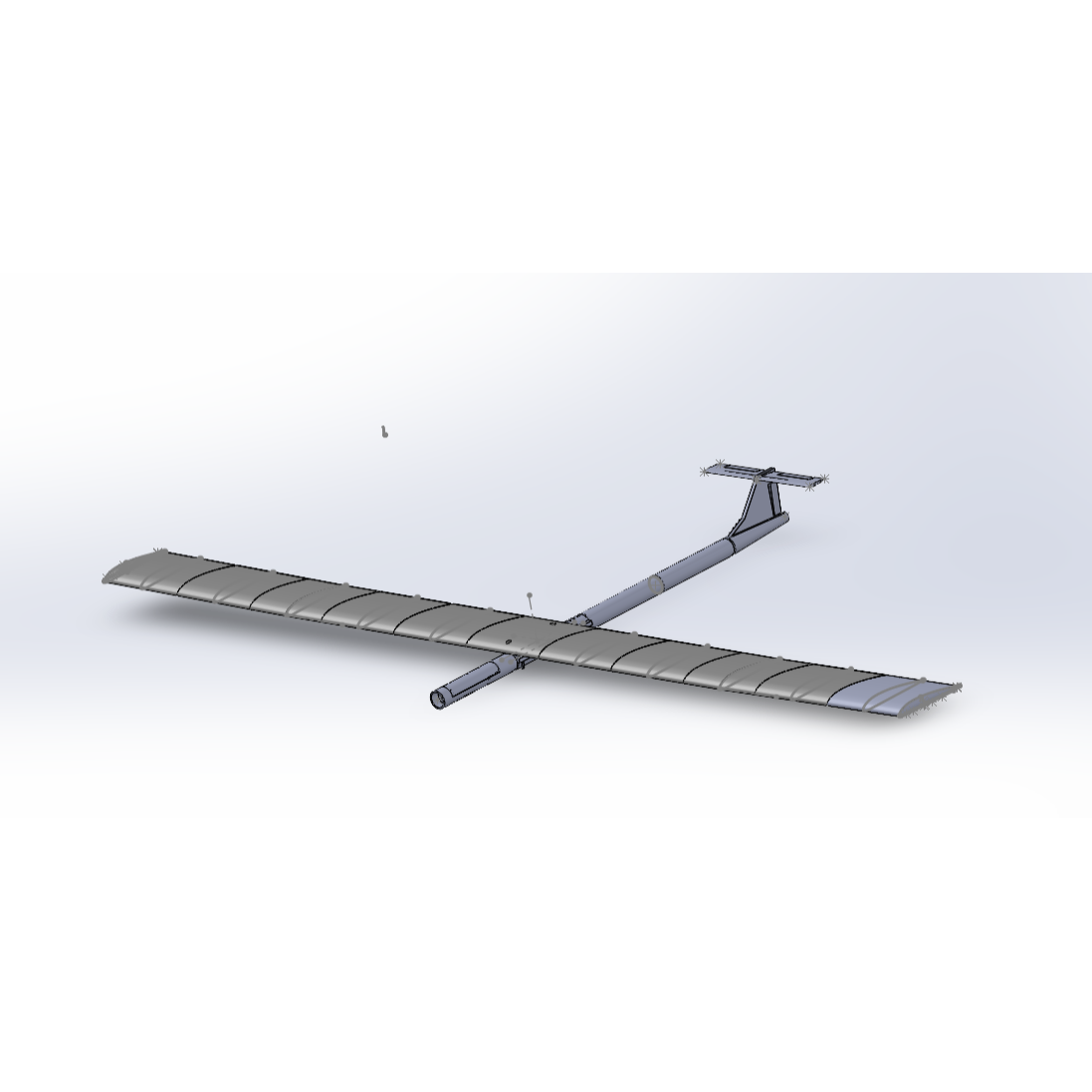
The Califonia 3D Printed Aircraft Competition (C-3DPAC) challenges teams to design, build, and fly a remote-controlled aircraft with significant 3D-printed components. Emphasizing innovation, aerodynamics, and additive manufacturing, teams must optimize weight, strength, and design to excel within competition constraints. Aircraft undergo design reviews, flight tests, and performance evaluations, including the core trial of longest flight time. The competition fosters engineering skills, teamwork, and practical application of additive manufacturing and design.
- Team Members: Noah Richards, Tyler De Silva, Yumi Kawata, Jonathan Guerrero, Sukhbir Randhawa
- Team Mach-3D Video
